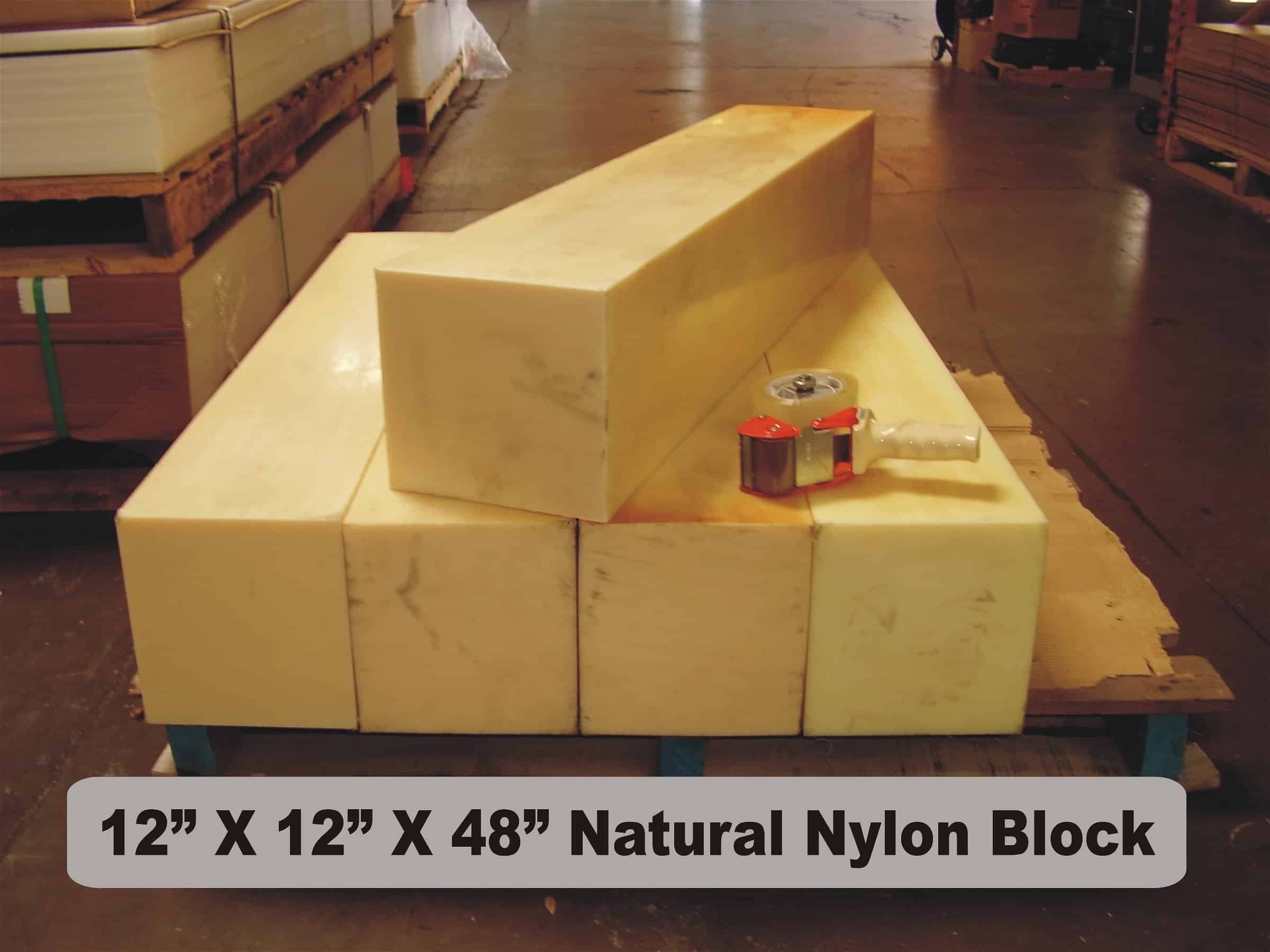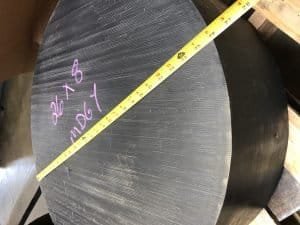
Nylon 6, Nylon 6/6 and Nylon 6/12 – What is the best Nylon rod or sheet to use
Nylon® Rod and Sheet (Polyamide) Grades available
The Nylon® Family of plastics are all very tough, strong, machine well, and have excellent wear properties. Nylon is a very popular plastic material, and is found in numerous applications. One of the largest usages is the production of household carpeting because of the excellent wear resistance. Nylon frequently replaces materials such as UHMW, PET, Acetal Copolymer – Acetal Homopolymer, and ABS. It will outwear most plastics and is self lubricating.
The wide variety of types and colors is one of the largest in the plastic industry.![]()
Nylon® Type 6/6 Rod, Sheet and Plate
The extruded Nylon 6/6 (Nylon Rod, Nylon Sheets and NylonTubes) material (aka: Polyhexamethylene Adiptimide) is available as Natural (tan – straw), Black, Glass filled (medium tan) and a molybdenum disulphide filled which is very dark gray. The most common size range for the extruded Nylon 6/6 is .125″ – 4.0″ diameter rod, and .125″ – 4.0″ thick sheet. The thicker materials should be cast due to cost and stress issues. For addition details on the Nylon Rod and Sheet 6/6 – see the data sheet.
Nylon Type 6 Cast Polycaprolactam
The cast Nylon type 6 has almost limitless possibilities. Many colors are available in Cast Nylon, the natural color, black, blue, dark gray (normally molybdenum disulphide filled again), green and many more. Sometimes the color is determined by the additive (oil filled) or by industry. Because of its relative ease of manufacture, many companies prefer to get their Nylon in a special color to help ‘brand’ their parts.
Cast Type 6 Polyamide can be made in Nylon rod from about 1.25″ diameter to almost any size. Nylon sheet normally starts at about .75″ thickness, and
once again, can be made to almost any thickness. In addition to standard rod and plate, other sizes and shapes can be cast from Nylon Type 6 – ie. discs, tubes, near net shapes, large profiles, etc. The only limitations are how much money you have, and the size of the truck to get it to you! We have had cast very large blocks (11″ X 11″ X 48″ solid), sheaves up to 66″ OD, large tubes 36″OD X 12″ ID X 14″ long, and many more massive Nylon Cast parts.
Nylon 6/12 -Low Moisture Absorption
The claim to fame for the Nylon Type 6/12 is the low moisture absorption of the material. This grade of Nylon Sheet and Nylon rod is more stable that the type 6 or 6/6, and with the lower water absorption, this resin can handle a wider range of environments. Our manufacturer partners can run this as an Extruded Nylon Rod or Nylon sheet item or as a Cast Nylon Rod item. This opens the door to a wide range of sizes and shapes. This material exhibits most of the same properties of the Nylon 6/6 and Cast Type 6, with some slight improvements in key properties.
Filled Grades of Nylon
Because of the processing of Cast Nylon, many additives can be mixed into the material. The most common are: glass filled, oil filled, Kevlar fiber filled (Hydlar Z) and the molybdenum disulphide (M0S2). In addition, other fills and colorants (pigments) can be added to assist in manufacture or processing.
Common specifications for Nylon are: L-P-410, ASTM D-4066, L-P-395C, Mil-M-20693B Comp A, Ty I, IA, II and III, Mil-M-20693B Comp B, Ty 4, Mil-P-17091B Type 1, and Mil-P-46060, PA0613, ASTM D-5989 S-PA0511, and more.
Before buying your next big chunk of Nylon, contact us for information on the benefits of a filled or near net-shape Cast Nylon part.
Contact us with your specifications, we look forward to assisting you.
Email us with questions or comments, or call us at 866-832-9315
Topic: Nylon Rod and Sheet

